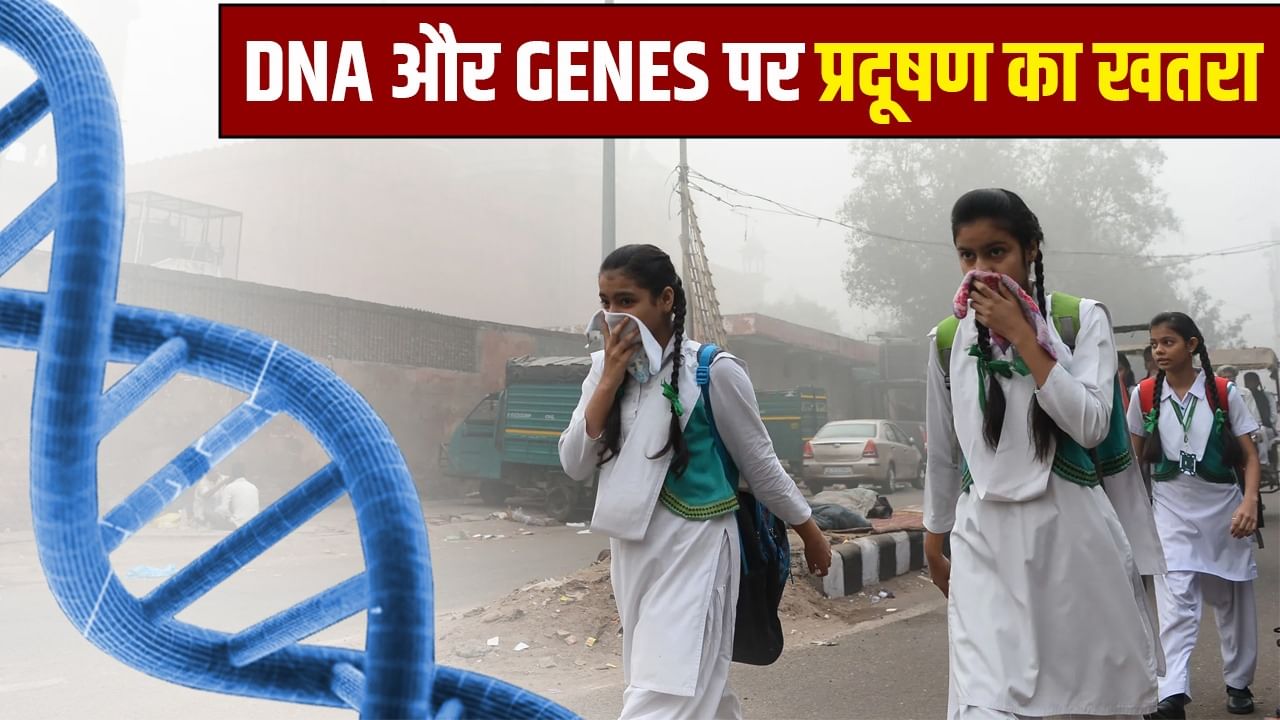Pollution harms our health as well as our DNA.
The level of pollution across the world has reached dangerous levels. 92% of the world’s population is currently breathing air that does not meet the standards of clean air at all. The World Health Organization also keeps issuing warnings in this regard from time to time. Not only this, whenever there is talk of harm caused by pollution, the first thing that comes to mind is lung, blood pressure and skill problems, although the real problem is much bigger than this. Scientists have found in their research that air pollution can also change our DNA and genes. This means that this is not just a problem in breathing, but is also the beginning of genetic change.
When many harmful substances dissolve in the air, we call them air pollution. This polluted air reaches our lungs as well as every cell of the body and harms us. Polluted air contains many types of elements, such as particulate matter (PM), black carbon, nitrogen oxides (NOx), ozone (O₃), heavy metals and polycyclic aromatic hydrocarbons (PAHs). The most dangerous among these is particulate matter. Very small, solid or liquid particles present in the air are so tiny that they enter the body with our breath. These come out from vehicles, factories, burning of wood or crops and enter our body.
Wind attack on DNA and genes
The blueprint of our body i.e. DNA is very sensitive. Even small changes can completely change the functioning of the body. Scientists have found that exposure to polluted air impairs the process of DNA methylation. Under normal circumstances, methylation regulates our genes. Which gene will be activated or switched off when? This is decided only by methylation. But when pollutant particles enter the body, they disturb this balance.
Sometimes methylation increases too much (hypermethylation), then some good genes, such as genes that protect against inflammation or cancer, are silenced and the risk increases. Similarly, sometimes it decreases, due to which the DNA becomes unstable and wrong genes start getting activated.
What does gene mutation mean?
When our genes change, the cells of the body start making wrong proteins. This can lead to lung disease, heart disease, diabetes, and even cancer. If these changes occur during pregnancy or childhood, the development of future generations may also be affected. That’s why scientists now say that pollution is not just an environmental problem, it has become a genetic problem.
Particulate Matter (PM2.5) – the most dangerous particle in the air
- PM2.5 means particles whose size is 2.5 micrometers or less. These are so small that they can neither be seen nor stopped. These reach our lungs directly and then join the bloodstream. According to research published in the Journal of Toxicology, PM2.5 breaks the structure of DNA. This change can bring changes in genes, which later causes diseases like cancer.
- PM2.5 creates Reactive Oxygen Species (ROS). These are unstable molecules that attack DNA, proteins and lipids. Due to this, DNA suffers oxidative damage.
- PM2.5 also damages our DNA repair genes (like OGG1, MTH1, XRCC1). This means that when DNA breaks, the system that repairs it also breaks down. Gradually all these changes together push the body towards diseases.
Nitrogen dioxide (NO₂) – the hidden poison of the air
- Nitrogen dioxide mainly comes from vehicle exhaust, factories and gas stoves. This gas reaches deep into the tissues of our lungs. In a study published in the journal Chemosphere, when rats were exposed to nitrogen dioxide, problems were found in their DNA in many places such as lungs, brain, kidneys, and even heart.
- In another study, human nasal cells were exposed to 0.1 ppm nitrogen dioxide (commonly found in city air). In just 30 minutes, the cells’ DNA fragmented and within three hours micronuclei began to form – a sign of gene instability. The surprising thing was that the cells did not die – they remained alive but their DNA was permanently changed.
Ozone – a dangerous invisible enemy
- Ozone, which we consider as a protective shield in the upper layer of the atmosphere. A toxic gas is formed in the air below. When inhaled, it increases oxidative stress and has genotoxic effects. A study published in the journal PLOS in 2017 tested the effects of 120 ppb ozone on human lung cells. As a result, DNA was found broken and micronuclei started forming, which are signs of permanent damage in the genes.
- The most damage occurred in the layer of the lungs, because it comes in contact with ozone first. Due to this, the lung cells gradually become weak and diseases like cancer may start in them.
Heavy metals – slow poison dissolved in the air
- Heavy metals like lead, arsenic, cadmium, nickel and mercury also enter our body in the air. They spread through dust blown from factories, burning garbage or contaminated soil. Research published in the Environmental International Journal shows that continuous exposure to these metals causes severe disturbances in the methylation of DNA. This imbalance makes the genome unstable over time.
- These metals also affect the histone proteins that wrap around DNA, causing good genes to be suppressed and bad genes to be activated. In the long run, this imbalance can cause cancer, respiratory disease, heart attack.
Impact of pollution on future generations
Toxic particles present in the air can affect not only us but also our future generations. When these particles reach the body of pregnant women, they also reach the fetus through the placenta. This can also change the methylation patterns in the fetal DNA, which can lead to weak lungs, obesity, or developmental problems in the baby after birth. It has been proven in many clinical epigenetic studies that changes in DNA caused by environmental pollution can last for generations.
